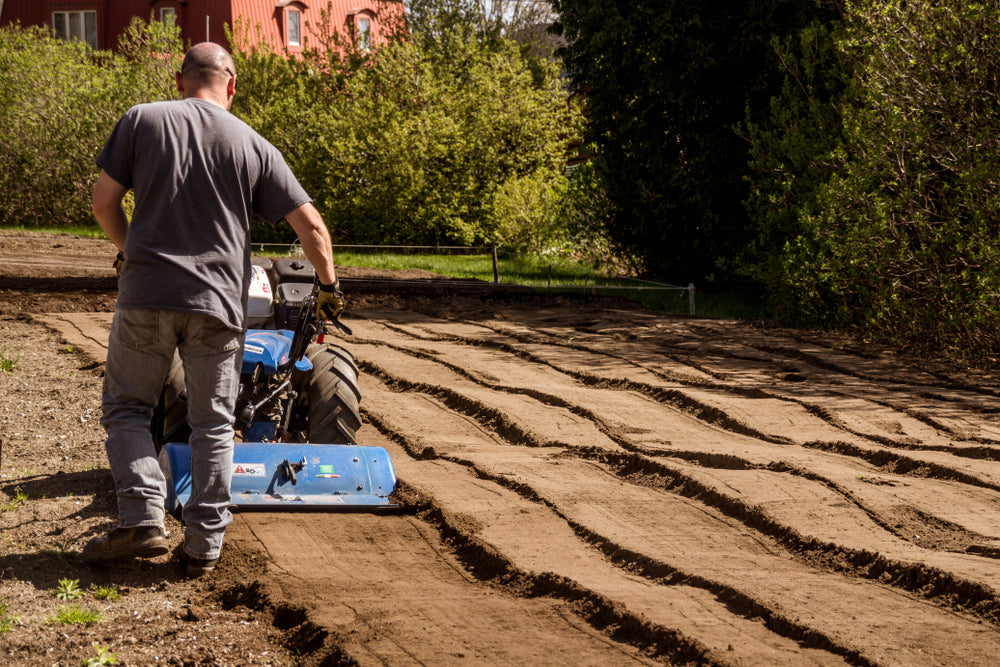Saving time in the garden is an important priority for many gardeners and landscapers alike, and there are a number of large tools & equipment pieces that can aid in these efforts. One great example is the BCS tiller, which may actually carry a few time-saving benefits that even some experienced gardeners are unaware of.
At Anderson's Seed and Garden, we're here to offer a wide range of large tools & equipment products for various gardening needs. Here are some basics on what a BCS tiller is, plus some of the unexpected ways it can help you save time and money in your garden - plus some BCS tiller time-saving tips from our team of experts.
What is a BCS Tiller?
For those just learning about them, BCS tillers refer to a rear product that can be attached to a BCS tractor to help with soil preparation and cultivation. They are designed to be versatile workhorses, capable of handling a variety of gardening tasks with ease. Whether you need to till soil for planting, mix in compost or fertilizers, or even clear out weeds and debris, a BCS tiller can make the job much easier.
How BCS Tillers Save Time in the Garden
Here are some of the key ways BCS tillers save time in the garden, including a few unexpected entries for many readers:
- Quick soil prep in fewer passes: With powerful engines and durable tines, BCS tillers can quickly break up soil and mix in amendments in just a few passes. This means less time spent preparing the soil for planting or maintenance.
- Simple switching with attachments: BCS tillers have a variety of attachments, from rotary plows to sickle bar mowers, that can easily be switched out for different tasks. This versatility saves time by eliminating the need for multiple machines.
- Efficient weed control: Manual weeding can be a tedious and time-consuming task, but with the help of a BCS tiller's attachments such as cultivators or harrows, you can quickly and effectively remove weeds without breaking your back.
- Easy maneuvering in tight spaces: BCS tillers are designed with a compact and ergonomic design, making them easy to maneuver in small or tight garden spaces. This saves time by allowing you to work efficiently without having to constantly readjust or struggle with larger machinery.
- Post-harvest bed cleanup simplicity: After harvesting your crops, BCS tillers can be used to quickly break up the soil and remove any leftover plant material. This helps prevent disease and pests from overwintering in your garden beds.
Use Case Scenarios and Tips
Here are a couple common scenarios where BCS tillers are often used, plus some BCS tiller time-saving tips in each area.
Soil Preparation
One of the most common uses for a BCS tiller is to prepare soil for planting. Here are some tips to make this process efficient and effective:
- Use the right attachment: BCS offers several different types of tiller attachments, including standard rotating tines, rear tine models, and even power harrows. Make sure you have the appropriate attachment for your specific soil type and gardening needs.
- Adjust depth accordingly: Depending on how hard or compact your soil is, you may need to adjust the depth of your tiller. In general, it's better to start with a shallower setting and then increase as needed rather than going too deep right away.
- Till in stages: For larger garden plots or tougher soil, it may be best to till in stages. This means breaking up the soil in smaller sections and then going back over each section multiple times until the entire area is tilled to your desired depth.
Post-Harvest Bed Cleanup
Another common use of a garden tiller is for post-harvest bed cleanup. Once you've harvested your vegetables or flowers, it's important to clean up the beds and prepare them for the next growing season. Here are some tips for using a garden tiller for post-harvest bed cleanup:
- Remove any remaining debris: Use your garden rake to remove any leftover plant debris, such as vegetable stalks or dead flower stems. This will help prevent disease and pests from overwintering in your soil.
- Toss in compost: If you have a compost pile, now is the perfect time to add some nutrient-rich compost to your garden beds. Use your tiller to mix in the compost with the existing soil, giving your plants a head start for next season.
- Break up compacted soil: After a full growing season, the soil in your garden beds may have become compacted from frequent watering and foot traffic. Use your tiller to loosen up the top few inches of soil, allowing for better drainage and root growth.
- Level out the bed: Over time, garden beds can become uneven due to settling or erosion. Use your tiller to level out any high or low spots, creating a more uniform surface for your plants.
- Control weeds: Tilling can also help control weeds in your garden. By disturbing the top layer of soil, it can uproot any weed seeds that may be waiting to germinate. Be sure to remove any visible weeds before tilling and continue to pull them as they appear throughout the growing season.
At Anderson's Seed and Garden, we're here to help with all your large tools & equipment needs, including tillers and related products. Contact us today to learn more!

